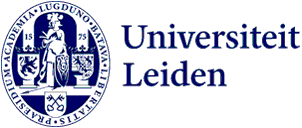
‘It’s a complete stalemate in Belarus’
What with coronavirus, the American elections and the Brexit botheration, we had almost forgotten that something miraculous happened in 2020: the repressed people of Belarus rallied against dictator Alexander Lukashenko, who has been in power for 26 years. Months later, what remains of the protest? We spoke to writer and journalist Laura Starink, one of the driving forces behind the Raam op Rusland (Window on Russia) knowledge platform.
The mass protests began after the elections on 9 August 2020, when Lukashenko claimed victory after major electoral fraud. We’re hearing much less about this now. What do you expect to happen: will the protest die down?
Laughs: ‘As a journalist I prefer not to make too many predictions. No one saw these mass demonstrations coming, so you simply don’t know what could happen. But I can see two things. First, the protests are no longer a mass thing. That is partly because change has not come, partly because of the cold and partly because of the repression. Loekasjenko is not giving an inch. However, it is also clear how incredibly persistent the resistance is. The Belarusians have become very creative in coming up with new forms of protest: short-lived protests in the neighbourhoods that vanish before the police can suppress them. One thing is clear: it’s a complete stalemate.’
Dutch media attention for the protests in the Dutch media has also seen a marked decrease. Isn’t that frustrating?
‘It’s a topic that preoccupies me, so it’s definitely frustrating. But it’s much more frustrating for the people of Belarus. The police are cracking down hard on local journalists, and in their increasing desperation to keep the international attention focused on them, at times they risk losing their objectivity. Which doesn’t help. And we’ve just been through a crazy year, with a pandemic, the American elections, the childcare allowance affair… That takes up a lot of the attention. That’s just how the media works.’
Looking back at the protests in the past months, what strikes you most?
‘First, how peaceful they were in general. You expect protests to get out of hand at some point because the peaceful demonstrations have resulted in nothing whatsoever so far. But the demonstrators have remained peaceful. In Russia too the demonstrations against the government are generally not violent. Why this is? I think because the people of Belarus have a long history of oppression and do not live in a constitutional state where you can expect a fair trial. What is more, the demonstrators don’t want to give the government the slightest opportunity to portray them as terrorists. And the role of women is remarkable: they are represented in full in the protest movement, both on the streets and in the opposition leadership.’

Russia and the European Union are playing an important role in the background. Is Belarus the stage for a new Cold War between East and West?
‘I think that both sides have learned from the Euromaidan protests in Kiev in 2013/14, when President Yanukovych refused at the last moment to sign the Association Agreement with the EU. Both the EU and Russia were quick to respond to the situation by expressing their support of the different sides. Ultimately this led to a war without any real winners. Pro-Russian militia may now have control of some of the country, but many Ukrainians have turned their backs en masse to Russia since the annexation of Crimea and the military intervention in the east, which means the Russian sphere of influence has shrunk drastically. Russia is therefore more cautious about Belarus. It supports Loekasjenko in words but hasn’t sent any troops. And in the meantime the EU has its own problems to contend with, what with COVID-19, Brexit and recalcitrant Poland and Hungary.’
As a journalist and writer you have worked a lot in Eastern Europe and Russia. You’re now one of the driving forces behind Raam op Rusland(Window on Russia), a platform that is a partner of Leiden University. What exactly do you do as a platform?
‘We see ourselves as a small thinktank that wants to bridge the gap between academia, journalism and the general public. We do so by, for example, giving a voice on our website to many as-yet-unknown Russian authors. And we organise public events that attract plenty of people and that the University helps make possible. Last year at Campus The Hague, for instance, we had a visit from Mikhail Khodorkovsky, one of Putin’s most famous opponents. And our partnership is also very beneficial to the University: students can do an internship with us, write and publish their thesis and learn the finer points of the profession of journalism. It’s a win-win situation for us and for the University.’
Text: Merijn van Nuland
Laura Starink
Laura Starink (1954) studied Slavic Languages and Literature at the University of Amsterdam. She worked for almost 30 years as a journalist for NRC Handelsblad, as a reporter, on the editorial team and as its Moscow correspondent.
She has also written several books about Russia and Eastern Europe. Her latest book, Post uit Rusland (Post from Russia), was published by AtlasContact in 2020. It covers almost 50 years of trips to Russia.
